#amida nyorai
Text

A painted image of seven deities dating to the Kamakura period (1185-1333) at Tōji Temple (東寺) in Kyoto: on the left, Fugen Bodhisattva (普賢菩薩) & Jizō Bodhisattva (地蔵菩薩); in the middle, Amida Buddha (阿弥陀如来) & Shakyamuni Buddha (釈迦如来) & Yakushi Buddha (薬師如来); on the right, Kannon Bodhisattva (観音菩薩) & Fudō Myōō (不動明王)
Image from "東寺の菩薩像" [Images of Bodhisattvas at Tōji] published by 東寺宝物館 [Tōji Treasure Museum], 1993, page 55
#japanese art#buddhist art#京都#kyoto#東寺#toji#普賢菩薩#fugen#地蔵菩薩#地蔵#jizo#阿弥陀如来#amida#amida nyorai#amitabha#釈迦如来#shaka nyorai#shakyamuni#薬師如来#yakushi nyorai#yakushi#観音菩薩#観音#kannon#avalokitesvara#不動明王#fudo myoo#真言宗#shingon#crazyfoxarchives
42 notes
·
View notes
Text
A Priest and His Disciples (by Hyakuzo Kurata): Book review
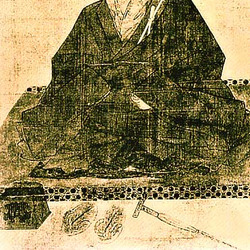
Shinran(親鸞)
The play consists of six acts, and the two characters, Shinran, the founder of the Jodo Shinshu sect, and Yuien, who served him well, appear throughout the play. The age difference is just 50 years old, and it feels like the relationship between a grandfather and a grandson. Shinran will live to be 90 years old, but Yuien will die when he is 40 years old and will be reborn in the Pure Land. It seems that the process up to that point was a very difficult road.
In the first place, the teachings of Honen (Shinran) are based on Amida Nyorai's wish that ``If you do not realize that you are an evil person and save all the ``villains'' who seek your salvation, you will not become a Buddha. And since Amida Nyorai has already attained Buddhahood, even the wicked are saved.” There is no such thing as a perfect human being, and from the perspective of a perfect Tathagata, everyone is the same villain. Here lies the secret of the “absolute power of others” of the Jodo sect and the Jodo Shin sect.
By the way, even if Shinran and Yuien entered the path of faith, their worldly desires would never go away.
In the case of Yuien, when he was 25 years old and in his prime, he had an unforgiving love affair with a 16-year-old courtesan, Kaede. When the senior monks notice this, they accuse Yuien of saying that love is forbidden and ask Shinran to banish him from the temple. This attitude was as ruthless as the Pharisees of Christianity.
Shinran's answer to this was, ``It is true that Yuien may be a bad person. It is because he is a bad person that he is here.” Although it violated the general precepts of Buddhism, it was a reasonable judgment in terms of the doctrine of the Pure Land Gate.
Time passes further, and Shinran is 90 years old and is on his deathbed. Yuien is also 40 years old, married to him "Kaede" named "Katsunobu", and she has two cute children. For Shinran, the last worldly desire in this world was Zenran, the child he had when he was in exile. Zenran liked debauchery and was a do-it-yourself son, so Shinran severed the relationship between parent and child. However, after meeting him at the end of his life, Shinran will leave this world and go to the Pure Land.
#A Priest and His Disciples#Hyakuzo Kurata#Yuien#rei morishita#Pure Land#Amida Nyorai#everyone is the same villain#Pharisees#Zenran#debauchery#Shinran
3 notes
·
View notes
Text
Buddha-Life, by Katagiri Roshi
Everyday Zen: Buddha-Life, by Katagiri Roshi
We realise the Buddha in every single existence.
https://wp.me/pFy3u-1Eq
Buddha is always present in what-is-just-is; buddha just is. If we think we understand ourselves, this is already not exactly what-is-just-is, or thusness or as-it-isness. This what-is-just-is, or thusness, is not a state of being that we can know through our consciousness. In Zen Buddhism it is said that this is ‘the self prior to our parents’ birth’ or prior to the germination of any single…
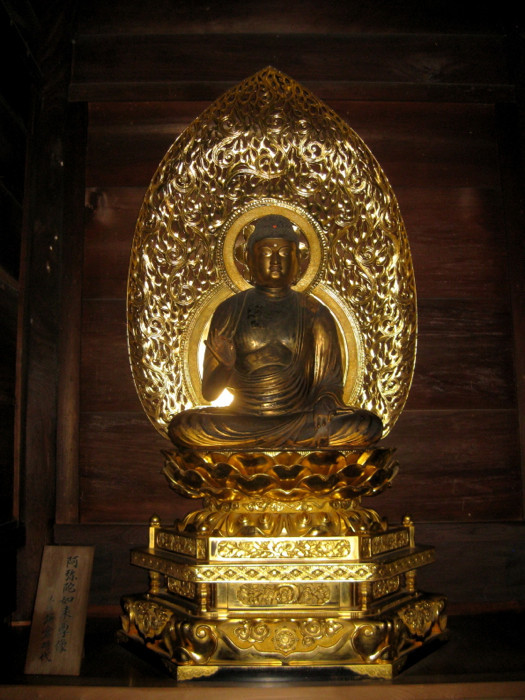
View On WordPress
#Amida Nyorai#Art © @TessaMacDermot#Buddha Dharma and Sangha#Katagiri Roshi#Photo by @KyotoDailyPhoto#Zazen
6 notes
·
View notes
Text
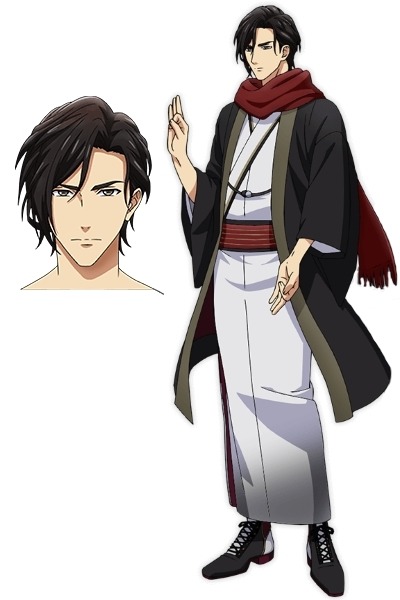
Namu Amida Butsu! Utena - Amida Nyorai
#Namu Amida Butsu! Utena - Amida Nyorai#Namu Amida Butsu! Utena#Amida Nyorai#anime character#anime aesthetic#oc aesthetic
0 notes
Text

Kat Kraydel is literally a bigender icon, when you look him/her up he/she's literally listed in both the male AND female categories
#yo kai watch#yokai watch#kat kraydel#hold on im gonna autism a little bit in the tags here#it kind of reminds me of another gender ambiguous figure in buddhism named Kannon#who has been labeled as both male and female in the past (but is mostly regarded as female in Japan)#even though kat kraydel is technically based off the buddha Amida Nyorai of the Jodo Sect#and not based off a bodhisattva#its still kinda neat to me how it parallels Kannon in that way#“are you male or female” “im enlightened”
8 notes
·
View notes
Text
Large Buddha Amida Nyorai
[et_pb_section fb_built=”1″ _builder_version=”4.16″ global_colors_info=”{}” theme_builder_area=”post_content”][et_pb_row column_structure=”1_2,1_2″ _builder_version=”4.16″ background_enable_color=”off” custom_padding=”16.1406px|0px|0|0px|false|false” global_colors_info=”{}” theme_builder_area=”post_content”][et_pb_column type=”1_2″ _builder_version=”4.16″ custom_padding=”|||”…
View On WordPress
#Amida#Amsterdam#Antique#antiques#art#Asian antiques#Asian art#Boddhisattva#BUDDHA#Edo#Japan#Japanese#Large#Nyorai#period
1 note
·
View note
Photo
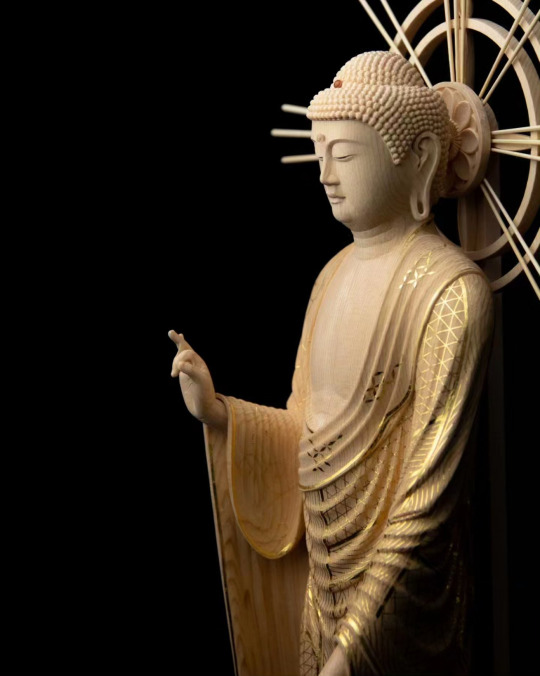
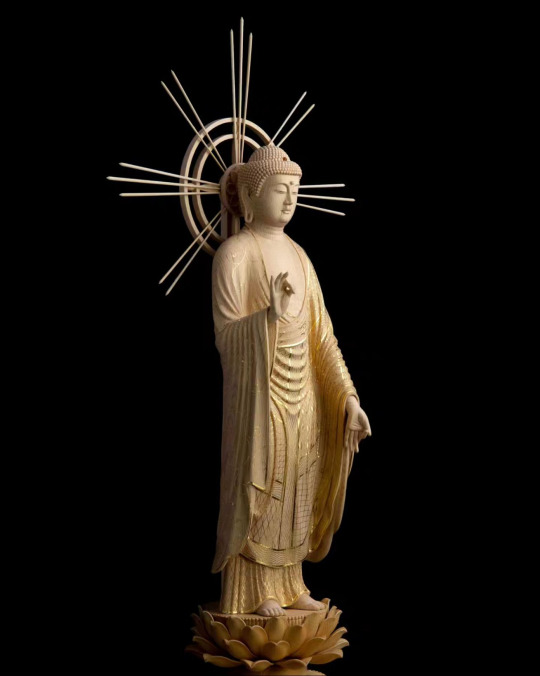
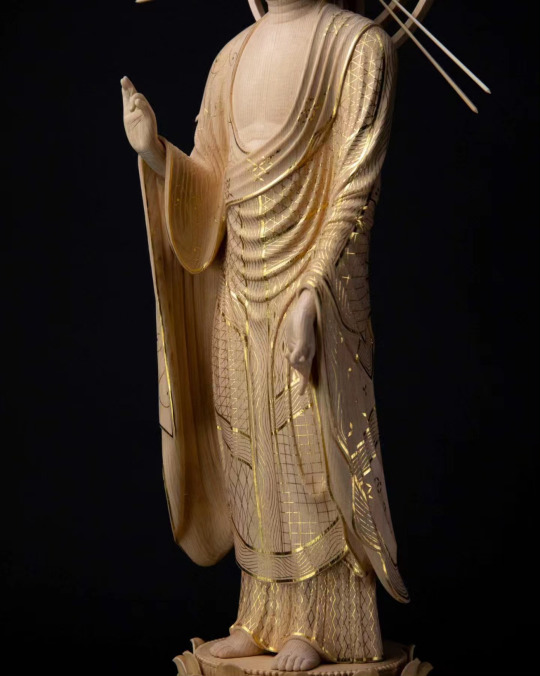

Fifth Amida Nyorai statue by Japanese Buddhist sculptor Gakyu Miyamoto
269 notes
·
View notes
Text


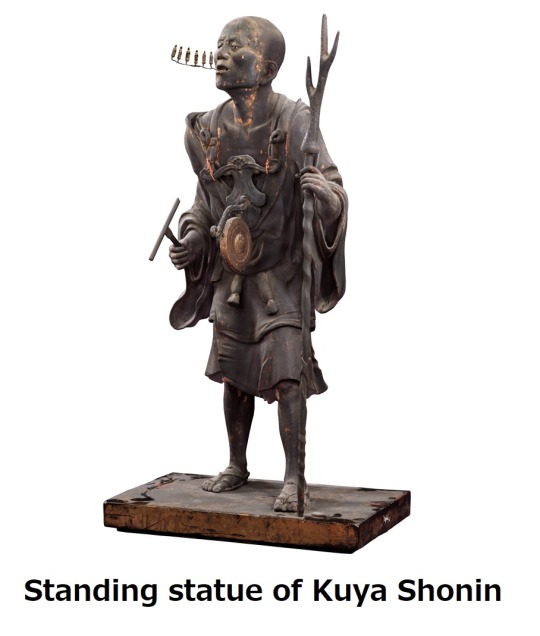

Standing statue of Kuya Shonin (空也上人立像)
Six small standing wooden Amitabha statues emerge from the open mouth. They represent the moment when a voice chanting "Namu Amidabutsu (南無阿弥陀仏)" transforms into the form of Amida Nyorai. (Google)
33 notes
·
View notes
Text
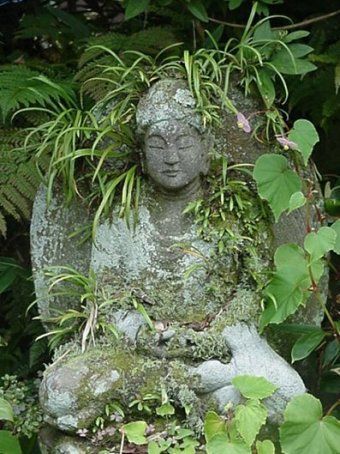
Amida Buddha, Amida Nyorai, Amida Tathagata (Skt. Amitabha), From the Digital Photo Dictionary of Japanese Buddhism.
16 notes
·
View notes
Note
I'm the one who sent you a question about the interview in Da Vinci magazine and the recent one about Kana. I enjoyed reading your opinion a lot, so I did a bit of scrolling back and reading everything.
I saw your post about how Akane and MEM were not supposed to stay after the Love Now arc some time ago, but I am 100% sure Akane and MEM were supposed to stick around after the main arc. MEM is another piece that is related to Aka's grand game of guessing the ending, so I will avoid talking about it for now (but I think you already knew about this since Nobuyuki did called MEM by the nickname of ME-san). I actually planned to discuss this with you, but laziness got to me until Sneaky pissed me off on 4chan, and I just kind of wrote about this topic (such impure motivation) there. I figured I should share this here as well.
For Akane, it is actually even more straight-forward than for Kana or Ruby. I used to ponder a lot about why Aka gave Ruby the Amaterasu line and Kana the image of the sun, but nothing for Akane. It doesn't really make sense because Aka is not the type who would give an easy answer to those actively seeking things behind his lies and riddles. In the sense of competition for who will end up with Aqua, not being linked to the image of the sun is a big red flag. In the more meta sense of children who are neglected by adults in the entertainment industry trying their best to shine and help others shine, it also doesn't make sense to have Akane never being put into the position of Amaterasu, even if there is only one real sun by the end of the story. The message should be that everyone can shine if they get help and are put into the spotlight. But eventually I arrived at the evidence that linked Akane to this whole Amaterasu/Sun thingy.
We start off with the real couple in Love Now: Nobuyuki and Yuki.
Nobuyuki Kumano (熊野ノブユキ). Nobuyuki is a name often written as 信幸 or 信行. If you read them in Onyomi, they are read as shinkou. The kanji for shinkou is 信仰. Together with his family name, Nobuyuki is a reference to the Kumano faith (熊野信仰).
Nobuyuki's lover is Sumi Yuki (鷲見ゆき). The action of visiting the three grand shrines at Kumano is called Kumano pilgrimage (熊野詣). This action has been taken successively by many Emperors of Japan throughout history. When this action is taken by the emperor, it is referred to as miyuki (御幸). So Kumano Nobuyuki x (Su)mi Yuki is a reference to the three grand shrines at Kumano. Among the three, there is Kumano Hongu Taisha, which enshrines Ketsumiko-no-okami, which is Susanoo in Shintoism and Amida Nyorai (Buddha of Infinite Light) in Buddhism. Susanoo is also linked to Yatagarasu.
The 'su' part in Yuki's name is also special. 鷲 means eagle. In the myth about Amaterasu hikikomori phase, there was a god who played a string instrument. When Amaterasu finally stepped out of the cave and light returned to the world, an eagle landed on the end of the string instrument and the god perceived that eagle as an image of a bird who brightened the world. The one who played the string instrument in Love Now was Kengo Morimoto, so it is not just a random setting.
Morimoto is a shrine in Shiga Prefecture that enshrines Amano-Iwato-Wake-no-kami (天石門別神) the god who is said to have also participated in getting Amaterasu out of her hikikomori phase. Nobuyuki is also a dancer just like Ama-no-Uzume. So we can say that in this arc, Akane was in the position of Amaterasu. Akane was written to be special from the start.
As for the part why the dancer is not playing the active part, I think it is because Aqua is not a dancer, but Aka wanted the protagonist to be the one to save the day. The same happened in Tokyo Blade, when Kana specifically monologued about whether Akane wanted to 'dance' with her. In this arc, the one who was put into the role of Amaterasu is Kana, while Akane is Ama-no-Uzume. Both times, Aqua was doing the heavy lifting instead of the 'dancers'.
This is outside of the scope of the discussion, but the colours of the glowsticks were also not random. In Japanese, there is a thing called 紅白文化 that treats red and white as contrast colours. Ai, who has a red glowstick; Ruby, who inherted the red glowstick; and Akane, who has (Aka: red) in her name, all share certain traits that contrast with Kana to some degree. Also, Aka gave Akane the surname Kurokawa, which means Akane has something in contrast with Kana but that something is also different from Ai and Ruby.
Publishing this one largely without commentary because I think it's some really interesting analysis and stands on its own without me needing to add to it! and also because poor anon has waited so long for a response... whoof
That said, re: Akane and Memcho - for what it's worth, I'm pretty sure their being later additions to the cast as opposed to being intended to join the story from their inception is something confirmed by Akasaka and Mengo. At the very least, in Mem's case, Aka and Mengo confirmed in the same interview where they talk about Ai's death being a during serialization decision; Mengo jokes about characters how surprising it is when certain characters who were intended to be one-offs end up becoming part of the main cast and Akasaka confirms that Memcho was one of these characters and that her role grew in the telling because he ended up liking her so much. She was not originally intended to join B-Komachi but he liked her and wanted her to continue having a role in the story and so it happened.
While it's worth noting that there is no direct confirmation that the same is true of Akane, I do believe it to be the case just based on how rapidly and how extremely her character changes post LoveNow. It's actually kind of jarring just how many of the things that come to define Akane in the latter half of the series like her rivalry with Kana and her genius actress analyst skills are like, transparently and hastily sellotaped onto her in the aftermath of that arc rather than existing as part of her from the start.
That's obviously not to say that she can't have grown into a role of more vital importance - she very clearly has! - but I just don't believe she or Mem were planned as big movers and shakers in the story from the start.
7 notes
·
View notes
Photo

A painted image of Amida Buddha (阿弥陀如来) and his entourage of bodhisattvas swooping in quickly to escort the faithful to his Pure Land in the west
Color on silk dating to the 13th century from the collection of Chion’in Temple (知恩院) in Kyoto
#japanese art#buddhist art#阿弥陀如来#阿弥陀#amida nyorai#amida#京都#kyoto#知恩院#chionin#浄土宗#jodo#pure land buddhism
52 notes
·
View notes
Text
"The middle is the curse": Thinking from the words of Lao Tzu (Essay)

I once read the saying, "The middle is the curse." When I entered the University of Tokyo Science 1, I was overwhelmed by the classmates around me, and I was frightened by the difficulty of mathematics and physics. I came across this word when I was interested in the Pure Land Buddhism and was seeking some kind of truth. I was a little weak.
This saying, "The middle is the curse," divides human beings into three classes, upper, middle, and lower, with the highest and the lowest. Because middles think they are intermediate, they are far from the salvation of Amida Nyorai. I think it was said that it was far from salvation and that it was a bad category in terms of Pure Land Buddhism. However, I forgot the name of this book and the author, so I tried to search for this word again on Google, but I got no hits at all. I don't think it was a very popular word.
However, I came to realize that there is an expression very similar to this in my favorite book of several decades: Lao Tzu. (I did not pick up Lao Tzu out of a timidity like in the Pure Land Buddhism, but I picked up in a positive state of mind.)
There is this... When the best sage hears the "way(Tao)", he tries to do it with all his might. The man in the middle does not move, as if it were not there. The lowest class laughs at the "way". If it is not laughed at, there is no value for "the way." ・・・Outline is written like this (chapter41).
Here, rather, the lowest sage is interesting. Indeed, he has his own criteria for evaluating things, and he laughs at "the way and its practices" according to it. Depending on how you negotiate, you may understand him the "way" and put him into practice. When this happens, the person in the middle who is easily touched stands out. It can be said that he is "gray area" and is self-satisfied with his current situation. I don't know what will happen to him.
In my experience, I've come across a lot of this middle class. It can be said that they occupy the majority of the world. Humans with expressionless faces that never change, and have no intention of changing. Perhaps the commentator of the Pure Land Buddhism, or even Lao Tzu, is saying that these people "can’t be saved."
(2022.11.19)
#The middle is the curse#Lao Tzu#Pure Land Buddhism#salvation of Amida Nyorai#way#tao#chapter41#gray area#middle class#essay#rei morishita
3 notes
·
View notes
Text
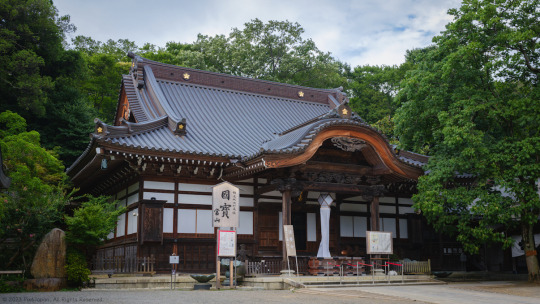
One of the Oldest Buddhist Temples in Tokyo
Location: Jindai-ji Motomachi, Chofu City, Tokyo, Japan
Timestamp: 15:28 on July 19, 2023
Jindai-ji Temple, established in 733, stands as a testament to Tokyo's ancient spiritual heritage. With its construction dating back over a millennium, it has witnessed the ebb and flow of centuries, preserving the wisdom and devotion of generations past.
The Main Hall's reconstruction in 1919 stands as a symbol of the temple's unwavering resilience against the destructive forces of time and fate. The flames of 1646 and 1865 could not deter the dedication of the faithful, who diligently restored the temple to its former glory.
As the special Head Temple of the Tendai sect of Buddhism, Jindai-ji Temple holds a special place in Japan's religious history. The Tendai sect, founded in 806, found its spiritual heart within these hallowed grounds, spreading its teachings and embodying the principles of harmony and enlightenment.
The Main Hall's enshrined statue of Amida Nyorai serves as a timeless link to the spiritual aspirations of centuries gone by. This beautifully crafted statue is a masterful example of Buddhist artistry, an embodiment of serenity that guides visitors toward deeper introspection.
In the heart of Tokyo's bustling pace, the temple's preserved woodland grove offers a respite—a verdant oasis that has sacred spring waters that flow through the temple grounds are said to possess a healing aura, inviting pilgrims and visitors to rekindle their spirits.
Since antiquity, Jindai-ji Temple has welcomed seekers of solace and assurance to its serene precincts, promising a journey beyond the noise and hurry of daily life, inviting all to rediscover moments of stillness and self-discovery.
Jindai-ji Temple invites all who enter to find a sanctuary where the mind can settle, the heart can open, and the soul can reconnect with the eternal rhythm of existence.
A visit to Jindai-ji Temple is an opportunity to partake in an age-old tradition of reverence. Embrace the continuity of devotion that has spanned generations and take with you the tranquility that lingers long after your departure.
Incorporating these suggestions can help paint a richer picture of the historical, cultural, and spiritual significance of Jindai-ji Temple, inviting you to embark on a journey of understanding and reflection.
For access details and references for further reading, check out the latest Pix4Japan blog post: https://www.pix4japan.com/blog/20230719-jindaiji
Fujifilm X100V with 5% diffusion filter
ISO 800 for 1/250 sec. at ƒ/8.0
Astia Soft film simulation
#ストリートスナップ#東京#深大寺#pix4japan#X100V#Fujifilm#street photography#Japan#Tokyo#Jindai-ji Temple#Buddhist Temple
19 notes
·
View notes
Text
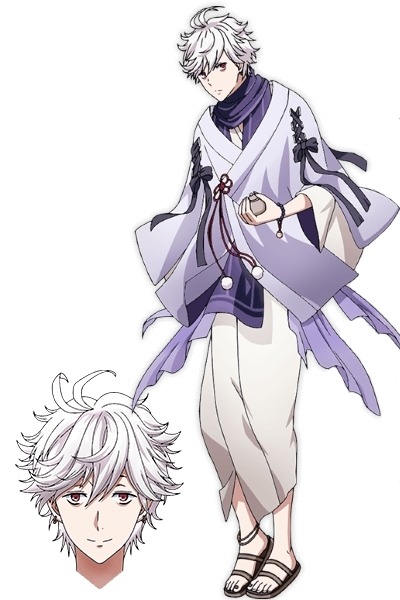
Namu Amida Butsu! Utena - Yakushi Nyorai
1 note
·
View note
Photo


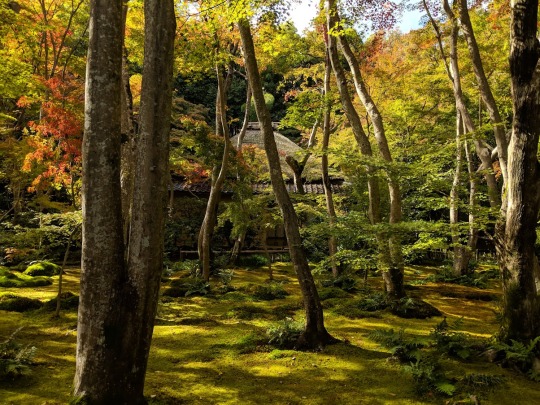
(I've mostly given up on the Chinese sections since it's not a language I'm studying, but if anyone can figure out the characters I'm missing, I'll happily amend the post. Also feel free to create a Chinese vocab list, if you'd like. :3)
祇王寺 (往生院)
往生院祇王寺と号する真言宗の寺である。寺伝によれば、この地は、平安時代に、法然上人の弟子、念仏房良鎮が往生院を開創し、後に祇王寺と呼ばれるようになったと伝えられている。
平家物語によれば、祇王は、平清盛に仕えた白拍子であったが、仏御前の出現により清盛の心が離れてしまったので、母刀自、妹祇女と共に出家し、当地に移り住んだ。後には、仏御前も加わり念仏三昧の余生を送ったと伝えられている。 現在の本堂は、明治二十八年 (一八九十)に再建されたもので、堂内には、本尊大日如来像をはじめ、平清盛と祇王ら四人の尼僧像を安置している。
境内には、祇王姉妹寺の墓と伝える宝筐印塔及び平清盛の供養塔などがある。
京都市
Gioji Temple (Ojoin Temple)
The Gioji Temple, of the Shingon Buddhist sect and formerly known as Ojoin, is said to have been founded by Nembutsubo Ryochin, a disciple of the priest Honen.
The main building, reconstructed in 1895, enshrines a statue of the Buddha Dainichi, who symbolizes oneness with the universe. There is also a statue of Taira no Kiyomori, the 12th century Taira clan chieftain, and fours statues of nuns, one of whom is Gio, a great beauty who had renounced the world while still young after she had lost favor with Kiyomori.
In the precincts stands a pagoda which is said to be the grave of Gio and her sister, and another pagoda dedicated to Kiyomori.
Kyoto City
祇王寺 (往生院)
祇王寺属真言宗派寺院、据寺传记載、在平安時代、法然上人的徒弟念佛房良镇开创了往生院、后来被称为祇王寺。于1895年得到重建的正殿内、除供*着本尊大日如来佛像外、还安置着平清盛以及祇王寺4位尼姑的*像。
寺内还保存着据说是王姐妹等人之墓的宝筐印塔以及平清盛的祭祀塔。
기오지 (오조인) 절
진언종 사찰로 절에 전해 오는 이야기에 의하면 헤이안시대에 호넨 큰스님의 제자 넨부쓰보 료친이 오조인 잘을 갸창해였으며, 후엘 기오지라 불리게 되었다고 한다.
본당은 1895년 재건된 것으로 그 내부에는 본존 다이니치여래상을 비롯해 다이라노 기요모리 상 및 기오 등 4명의 비구니 상이 안치되어 있다.
경내에는 기오 자매 등의 묘라고 전해지는 부협인탑과 다이라노 기요모리 공양덥 등이 있다.
쿄토시
Japanese
号する (ごうする) to name, take a second name
真言宗 (しんごんしゅう) Shingon sect
法然 (ほうねん) Honen
上人 (しょうにん) holy priest, saint
念仏房良鎮 (ねんぶつぼう・りょうちん) Nembutsubo Ryochin
開創 (かいそう) initial opening [esp. of a temple]
平清盛 (たいらのきよもり) Taira no Kiyomori
仕える (つかえる) to serve, attend
白拍子 (しらびょうし) dancing girl [end of Heian period]
仏御前 (ほとけごぜん) Hotoke-gozen, a dancing girl
母刀自 (おもとじ) mother [archaic]
祇女 ? Gio?
出家 (しゅっけ) entering the priesthood
念仏三昧 (ねんぶつざんまい) being deep in prayer; praying fervently to Amida Buddha
余生 (よせい) the rest of one's life
送る (おくる) to spend (time), to live one's life
本堂 (ほんどう) main temple building
再建 (さいこん) rebuilding (a temple or shrine)
本尊 (ほんぞん) principal object of worship at a temple (usu. a Buddha or bodhisattva)
大日如来 (だいにちにょらい) Daichi Nyorai/Vairocana/Mahavairocana
尼僧 (にそう) nun, priestess
安置 (あんち) enshrinement, installation (of an image)
境内 (けいだい) grounds (esp. of shrines and temples), precincts
宝筐印塔 (ほうきょういんとう) a type of pagoda that's a grave/memorial tower
供養塔 (くようとう) memorial tower
Korean
절 Buddhist temple
진언종 Shingon sect
사찰 Buddhist temple
큰스님 great Buddhist monk, monk of virtue
제자 student, disciple
본당 main temple, hall of a temple
재건 reconstruction, rebuild
내부 the inside, interior
본존 the object of worship, principal icon
다이니치여래 Mahavairocana
상 statue, figure
비롯하다 to begin, start
및 and, as well as
자매 sister
묘 grave, tomb
전해지다 to be told, conveyed; passed down
공양드리다 to make an offering to Buddha
#日本語#Japanese vocabulary#Japanese language#日本#嵐山#仏教#Arashiyama#Buddhism#한국어#Korean vocabulary#Japan#京都#Kyoto#Japanese langblr
23 notes
·
View notes
Photo

Let there be Light
Amida Nyorai - Buddha of Infinite Light, part of “Kimono Style” The John C Weber collection on view at the Metropolitan Museum https://www.metmuseum.org/exhibitions/listings/2022/kimono-style. Fifth Avenue and 82nd Street, Upper East Side, New York City.
24 notes
·
View notes